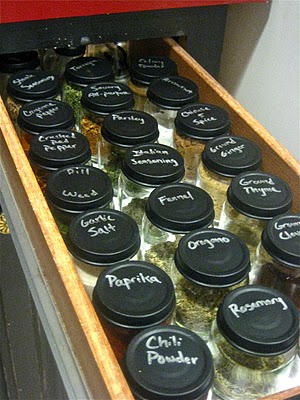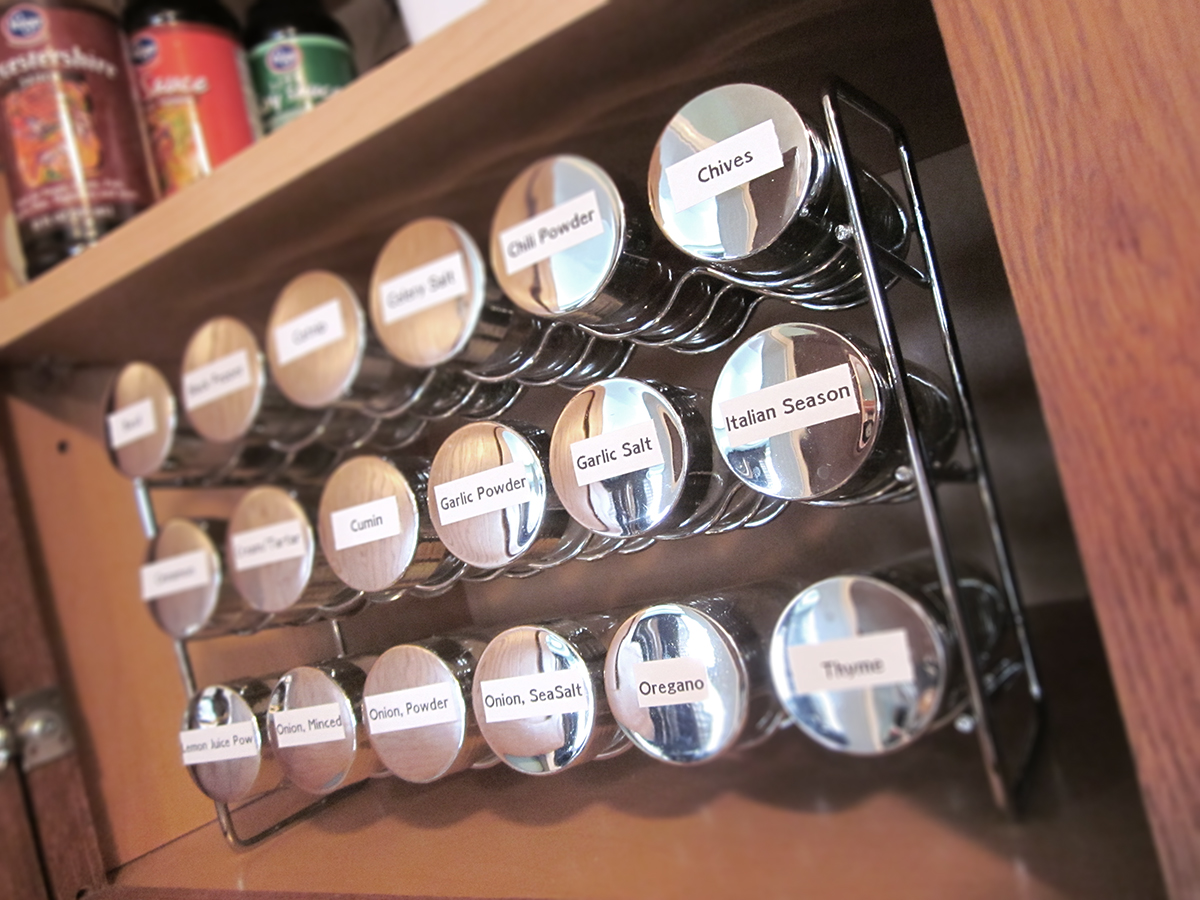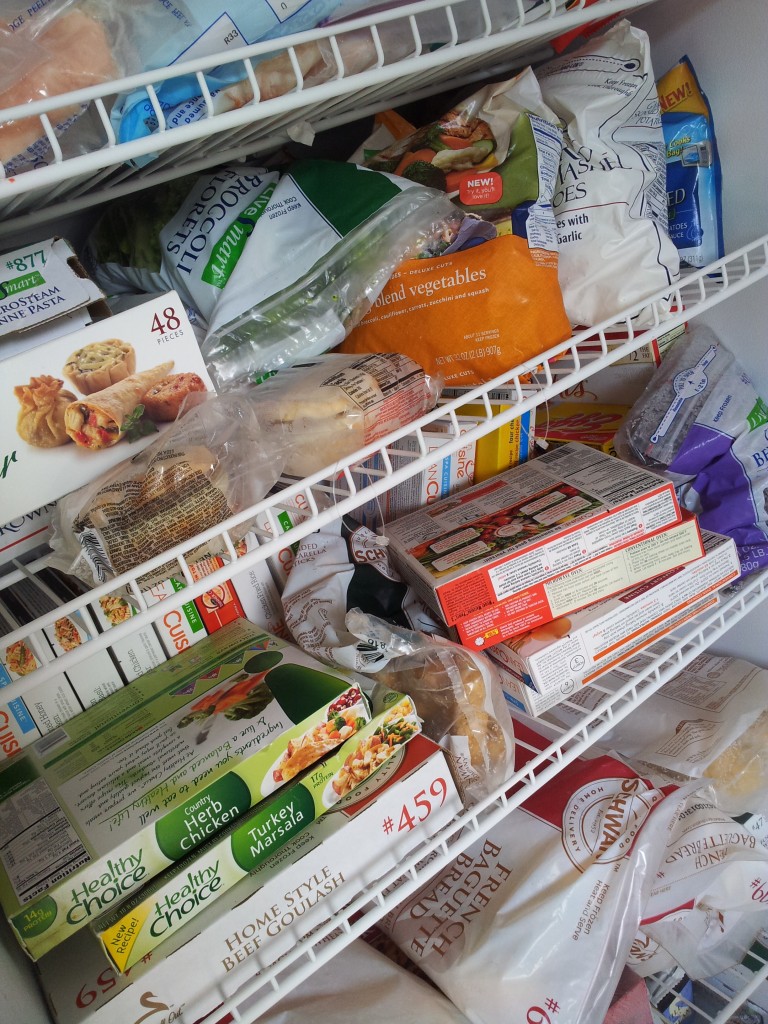It’s happened to all of us. You wake up one day and realize your pantry or food cabinets and freezer are a mess. You’re planning on a long summer or Christmas vacation and want to use up what you have on hand. Maybe it’s time to take a Pantry and Freezer Challenge. Either way, it’s time to organize your food. That’s what we’ll be doing as part of this week’s article in the Organized Life Series.
What is a Pantry and Freezer Challenge?
A pantry challenge is using your existing food stores and resources, your pantry and freezer, to make all of your meals. It is a challenge to not buy anything new from the grocery store to complete dinner.
A pantry challenge can vary in its “rules.” You first set the time length for the challenge. Most challenges last for a week or two, but you might try three days if it is your first challenge, or a month if you really have a lot of food stored up.
Other rules to set for the challenge have to do with what you are permitted to purchase. Can you purchase milk and fresh produce, for example? Are non-food items included in the challenge, such as no paper products? Can you use up some freezer meals or does everything need to be made from pantry items? It is really up to you to decide how strict to be.
Why should you have a pantry challenge? There are a few good reasons. A pantry challenge can come in handy when the budget is running low, and it is better use what you have on hand. A pantry challenge can also help you use up older items in your pantry that you tend not to grab when it comes to dinner time. Remember that great sale on tomato soup? Well, those four cans have been sitting on the shelf forever. Now is the time to get creative with them.
But before you can start a Pantry Challenge, you have to organize your food. That’s where this article comes in.
Organize Your Pantry
It is kind of obvious, but before you can get started using the food in your pantry or freezer, you need to know what you have. Open up that pantry. Look at your mess. Revel in it. This is the food you will be eating for the next month.
Check out the article on Cleaning Out the Pantry for more detail, but I’m sure you can figure it out.
- Pull Everything Out
- Clean the shelves
- Throw away things that are out-dated
- Give away things you won’t eat
- Put things back in an organized fashion
Organize Your Spice Cabinet
Most people have one area like a pantry closet for boxed and canned goods. Another area altogether is reserved for spices, seasonings and other cooking and baking needs. We’re calling this the spice cabinet.
The biggest problem with the spice cabinet is being able to get what you need without digging. As you can see from my “before” picture, I wasn’t completely unorganized. I had a nice stacking shelf and everything. But I still had to root around for spices I needed. There are tons of spice organizers out there. There are some that mount to the wall or inside the cabinet. Some sit on the kitchen counter. You can even organize spices into new jars with matching labels. I’ve seen some cute solutions where people use chalkboard paint on the lids and put them in a kitchen drawer.

Image courtesy of Frugal Decor Mom: http://frugaldecormom.blogspot.com/2011/02/kitchen-organization.html
If you have more drawer than cabinet space, this is a great solution – go for it! And I suggest that you add a purchase or expiration date to the jars as well. However, if you need your spices to be in a cabinet, it’s time to look at other solutions. A good place to start is to look at Spice Racks at Amazon. When deciding on a solution for organizing your spices, there are a couple of things to keep in mind:
- Keep your spices away from sunlight or heat, as heat exposure can affect the flavor and freshness of spices and herbs. Do not put it on a windowsill, a sunlit counter or next to the stove.
- Most-used first! Make sure that the spices you use most often are easy to find and grab
- Dates! Get rid of old spices and mark dates on any that don’t have them.
Find your spice dates. Most of your spices won’t have an expiration date. Here’s a great link from McCormick to find out when your spice was made and if it is expired:

Replacing your spices – After checking my dates, I had pretty much one spice that wasn’t expired. If you’re in the same boat, you may be thinking, “Spices are expensive!” Replacements can cost anywhere from $1 to over $10 per bottle. How can you Replace Your Spices On A Budget? Check out the article, but the key is to buy in bulk.
For the actual spice area organization, follow the same steps as for the pantry:
- Pull Everything Out
- Clean the shelves
- Throw away things that are out-dated
- Give away things you won’t eat
- Put things back in an organized fashion
Organize Your Freezer
Now you can revel in your freezer mess. Hopefully, you have a nice big backup freezer in your basement or garage. If you do it probably looks like this:
Having a freezer in your garage or basement allows you to stock up on items (like frozen dinners, frozen pizza, meat) when they go on sale. And if you are thinking of getting a cheap chest freezer – don’t! First, you have to dig to find things at the bottom, and you have to do it while bent over – a mean feat if you’re short! And after a while, the freezer lid hinges will give out. If you’ve ever had a freezer lid fall on you (I have), it is not a pleasant experience. Get a nice upright freezer with wonderful shelves for organizing.
Once you’re ready to tackle that existing freezer:
- Pull Everything Out
- Clean the shelves
- Throw away things that are out-dated
- Give away things you won’t eat
- Put things back in an organized fashion
Keep It Organized
Labels, labels, labels. Labels are an organizer’s best friend. If you label your pantry and freezer shelves (or on the wall next to the shelf) you know that breakfast items go here, bread goes here, or meats go there. When it’s time to put things away after a trip to the grocery store, don’t put things on the wrong shelf. Put them where they go.
FIFO – First In, First Out. Rotate your food. If you have 3 boxes of the same cereal, make sure the oldest is in the front. When you bring in a new item, put it behind the existing older item.
Watch Expiration Dates. When you do your meal planning or make your grocery list, check the dates on your items and replace things when necessary. This is best done when you’re planning your meals and looking at ingredients. It’s Thanksgiving and you’re going to use a few spices that you haven’t used since last year – check the dates when you’re making sure you have something. Do this when you do your meal planning every week.








